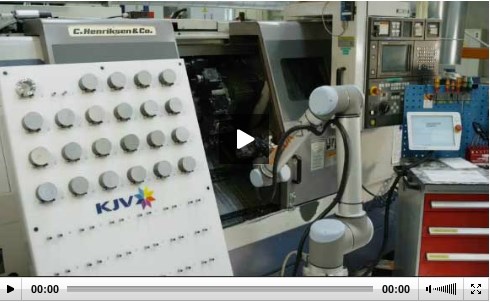Can You Add Automation Without Enclosures?
A new line of robot arms offers the possibility to safely function alongside personnel with no safety guarding.
Share






IMTS 2012 saw the U.S. introduction of ’ line of lightweight, six-axis robot arms for machine tending and other automated applications. Perhaps this equipment’s most distinguishing feature is that it often doesn’t require the enclosures that typical robotic loading applications do. Because the robot arms are compliant with the ISO 10218 safety standard for industrial robots, they can safely function alongside personnel with no safety guarding in many cases. If an employee was to contact the robot arm exerting a force of only 150 Newtons, the robot arm would automatically stop operating. (The arm measures electrical current in its joints to determine force and movement, rather than more costly sensor technology.) That said, all companies must carry out a risk assessment of their specific applications, considering how the arms are installed, what gripping tools are used and so on to determine if enclosures are needed.
Click here to learn more and see a video of one of the arms in action.
Related Content
-
5 Stages of a Closed-Loop CNC Machining Cell
Controlling variability in a closed-loop manufacturing process requires inspection data collected before, during and immediately after machining — and a means to act on that data in real time. Here’s one system that accomplishes this.
-
Inside the Premium Machine Shop Making Fasteners
AMPG can’t help but take risks — its management doesn’t know how to run machines. But these risks have enabled it to become a runaway success in its market.
-
Lean Approach to Automated Machine Tending Delivers Quicker Paths to Success
Almost any shop can automate at least some of its production, even in low-volume, high-mix applications. The key to getting started is finding the simplest solutions that fit your requirements. It helps to work with an automation partner that understands your needs.













